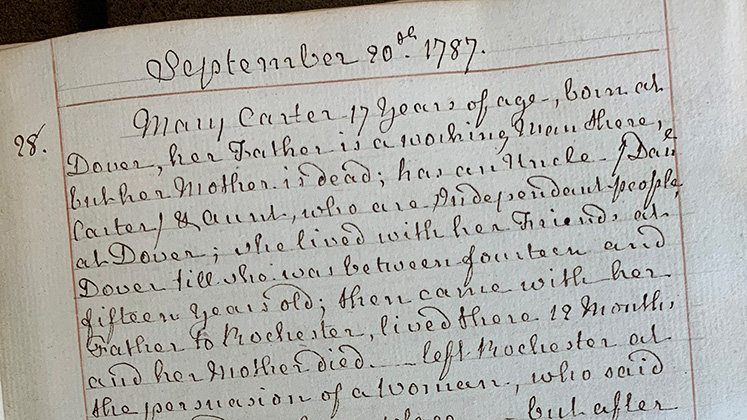How grass-roots activism in 1980s San Francisco led to better treatment for HIV/AIDS. Matthew Purcell’s research examines how the work of one non-profit, the Healing Alternatives Foundation (HAF), with the city’s AIDS activists and the larger medical establishment helped produce new treatments for AIDS in the teeth of the authorities.
Direct action campaigns focused on patient advocacy were the hallmark strategy of AIDS activism in the 1980s and 90s. Many of the most successful campaigns were formed within an ecosystem of nonprofit organisations that developed in San Francisco.

The Healing Alternatives Foundation was founded in 1987 as a Buyers’ Club. These pool members’ fees to bulk buy drug therapies at low prices or to supply drug therapies that are difficult to obtain independently. The HAF was a member of a nationwide network of Buyers’ Clubs, the most famous of which was the subject of the 2013 film The Dallas Buyers Club.
At the time of the network’s founding, there was one FDA-approved treatment for AIDS, azidothymidine (AZT). The side effects of the drug included nausea, vomiting, and headaches and in the long-term included anemia, and liver and heart damage. The Buyers’ Clubs refused to settle for a drug treatment with such harsh side effects. Their search for non-FDA-approved drug treatments would eventually help lead to the creation of HAART, the first effective treatment for AIDS.
Science and policy from the grassroots
The Healing Alternatives Foundation played an essential role in the development of HAART through its work with Project Inform. Project Inform ran underground clinical trials on alternative drug treatments for AIDS. The HAF supplied most of the drug treatments for these trials. One of the drugs that the HAF supplied to Project Inform’s activist scientists was ddC. The ddC clinical trials produced evidence demonstrating ddC’s effectiveness against AIDS. The finding greatly expanded the demand for the therapy option within the AIDS community.
Since the drug had not yet been approved by the FDA, the supply and distribution of ddC led the Healing Alternatives Foundation, Project Inform, and other groups involved into direct confrontation with the medical establishment. On 24 January 1992, the FDA sent agents to the HAF offices to confiscate all tablets of ddC and threatened the organisation with further legal action if they continued to distribute the non-FDA-approved drug.
Just under six months later, by 19 June 1992, the FDA approved ddC. After the approval of ddC, a series of similar drug treatments were approved. The cascade of drug approvals allowed medical scientists the freedom to test combined antiretroviral treatments, for example AZT and ddC taken together. These drug ‘cocktails’ are the basis for the Highly Active Antiretroviral Therapy (HAART) treatments used today.
As well as supplying drug treatments, the Healing Alternatives Foundation also utilised its 401(c)3 non-profit status to help establish similar grassroots AIDS activist groups. As an umbrella organisation, the HAF shared the benefits of its tax-exempt status with like-minded, emerging groups. This protection could last from a couple of months to a year. Additionally, the HAF’s leadership provided institutional knowledge to the newly established organisations.
The missions of the organisations fostered by the Healing Alternatives Foundation varied. Some, like Project Inform, had clinical focuses and searched alongside the HAF for alternative treatment options. Others had policy-minded missions. These groups complemented the HAF’s mission by carrying out both health education and policy campaigns.
The most influential of this latter type of group to receive support from the Healing Alternatives Foundation was ACT UP-Golden Gate. ACT UP-Golden Gate was the vocal, political arm of the San Francisco AIDS movement. ACT UP-Golden Gate protests included blocking traffic on the Golden Gate Bridge and a sit-in at the San Francisco General Hospital. ACT UP-Golden Gate’s president and Spanish national, Tomas Fabregas, refused to comply with President George H. W. Bush’s ban on admitting non-U. S. citizens infected with AIDS entry into the country. Traveling from the 1992 International AIDS Conference in Amsterdam, he entered San Francisco Airport wearing a shirt with the slogan ‘AIDS knows no borders’.
The community of AIDS advocacy
As the Healing Alternatives Foundation grew, its mission had expanded. It provided drugs for underground clinical trials and acted as an umbrella organisation for grassroots political groups focused on public health and policy issues related to AIDS. How did the Healing Alternatives Foundation achieve this prominent position in San Francisco? Using institutional records made available through the UC-San Francisco Library Archive, I investigated the HAF’s organisational activity from 1987-1994. Using board meeting minutes, internal staff memos, financial statements, and external correspondences, I identified the arc of the organisation’s ups and downs and the interplay between its leadership and the scope and reach of the its expanding mission.
From reading the correspondence and meeting minutes, I mapped out a network of relationships the leadership at the Healing Alternatives Foundation had with other individuals involved in AIDS activism. Changes in these personal relationships preceded strategic shifts in the organisation’s tactics. It was the interplay between organisational and personal relationships that drove the development of the HAF from a Buyers Club to an integral member of San Francisco’s grassroots AIDS Movement.
This can be seen clearly in the 1990s when the leadership of the Healing Alternatives Foundation and ACT UP-Golden Gate became intertwined. Tomas Fabregas and two other ACT UP-Golden Gate members took positions on the HAF’s board. These leadership changes reflect the strong bond between the two organisations as well as a shift in the tactical focus of the HAF. As drug treatments became more widely available, the HAF began focusing more on AIDS treatment education and community outreach. Therefore, the relationship with ACT UP-Golden Gate provided even greater value to the HAF as the AIDS epidemic and the medical response to it progressed.
The Healing Alternatives Foundation contributed to the growth of grassroots AIDS activism in San Francisco by engaging with other organisations and fostering a community of activists who sought to challenge the medical establishment. An effective grassroots movement developed in San Francisco because organisations worked together to meet the AIDS community’s needs. The Healing Alternatives Foundation organized buyers for alternative treatments and supported organizations which developed new treatments and promoted the political cause of the movement. Project Inform conducted research and development through community-driven clinical trials. ACT UP demanded the public acknowledge the neglected needs of people with AIDS and promoted the goals of the AIDS movement in politics. Together, they created a grassroots approach that addressed multiple aspects of the AIDS epidemic in the 1980s and 1990s.
Conclusion
My research on the Healing Alternatives Foundation underlines the dynamic interplay health activists have with the medical establishment, fellow activist groups, and the populations for whom they fight. Activists seek to challenge the status quo. First as a Buyers Club and then as a coordinator of activist groups in San Francisco, the HAF worked on behalf of those suffering from AIDS. While the HAF’s overall mission to provide greater access to alternative AIDS treatments remained constant across the period, the organisation’s leadership allocated available resources across a network of organisations to achieve a lasting impact. The success of HAART treatments, which decreased AIDS-related deaths by 40 percent in the year following its FDA approval, represents the culmination of grassroots AIDS activism as much as it does the success of traditional medical research and development. Facing a novel virus and an initially apathetic public, the HAF and its affiliates supplied hope to the AIDS community through a multi-layered, grassroots response.




